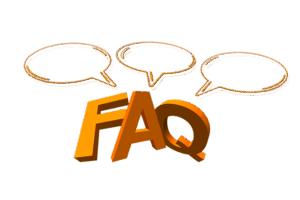Google FAQ Rich Results enhance search experience by displaying structured, user-friendly answers to frequently asked questions. Implementing the FAQPage schema signals relevant content, increasing eligibility for rich results that capture more SERP space and boost click-through rates. Effective optimization involves structuring content, using proper schema markup (`name`, `acceptedAnswer`, `url`), and writing tailored FAQs addressing user intent. This leads to improved website visibility, engagement, and traffic through enhanced user experience and SEO. Regularly review and update content based on performance data and Google algorithm updates to maximize benefits.
Adding the FAQPage schema to your website content is a powerful strategy to boost user engagement and search engine visibility. With Google’s rich FAQ results, your site can showcase frequently asked questions and answers directly on search result pages, increasing click-through rates. This article explores how implementing this schema can improve SEO, from understanding Google’s rich features to measuring success. Discover the benefits of structured content, question selection, integration techniques, and optimization tips for maximizing your online presence.
- Understanding Google FAQ Rich Results
- Benefits of Implementing FAQPage Schema
- Structuring Your Content for Optimal SEO
- Choosing Relevant Questions and Answers
- Integrating FAQPage into Existing Content
- Measuring Success and Continuous Optimization
Understanding Google FAQ Rich Results

Google FAQ Rich Results are enhanced search results that display frequently asked questions and their answers in a structured, user-friendly format. This feature allows search engines to understand and present content more effectively, providing users with quick access to relevant information. By implementing the FAQPage schema, webmasters can signal to search engines that their content is tailored for FAQ-style queries, thus increasing the likelihood of rich result eligibility.
Rich FAQ Results not only improve user experience by offering instant answers but also capture more real estate on search engine results pages (SERPs). This visual enhancement can significantly boost click-through rates and drive more traffic to your website. To achieve this, FAQ Snippet Optimization involves structuring your content in a specific way, utilizing the appropriate schema markup, and ensuring your FAQs are well-written and relevant to your audience’s queries.
Benefits of Implementing FAQPage Schema

Implementing the FAQPage schema offers significant advantages for website owners aiming to enhance user experience and search engine optimization (SEO). By adopting this structured data format, websites can leverage Google’s FAQ Rich Results, which present frequently asked questions and answers in a visually appealing, expandable list directly within the search results page. This not only catches the eye of potential visitors but also provides quick access to valuable information, encouraging them to engage further with your content.
Moreover, the Schema FAQPage Type allows for optimized FAQ snippet displays, ensuring that relevant queries are answered concisely and accurately. This facilitates a better user experience by reducing the need for scrollings and clicks to find answers. With rich FAQ results, websites can increase their visibility on search engines, potentially capturing more click-throughs and improving overall SERP real estate, ultimately driving higher traffic and engagement rates.
Structuring Your Content for Optimal SEO

To optimize your content for Google’s FAQ Rich Results and maximize user engagement, structuring your FAQs in a clear, organized manner is paramount. Begin by identifying key topics and questions that users frequently search for. Each question should be concise and specific, aiming to address a singular intent. Organize these into logical categories, ensuring each category focuses on a distinct aspect of your product or service.
When implementing the FAQPage schema, adhere to best practices like using the Schema.org markup language and including relevant properties such as `name`, `acceptedAnswer` (with `text` type), and `url`. Additionally, optimize your snippet with rich descriptions that entice users to click, incorporating keywords naturally and highlighting the benefits or solutions offered by each FAQ. This combination of structured content and optimized snippets can significantly enhance your search engine visibility and capture more user interaction.
Choosing Relevant Questions and Answers

When crafting Frequently Asked Questions (FAQ) for your website’s Schema FAQPage type, it’s crucial to select questions that align with user intent and reflect common queries related to your products or services. Google’s rich FAQ results are designed to highlight the most relevant information, so understanding your target audience is key. Consider the terms and phrases users might search for when seeking answers to these questions, keeping in mind the context and specific needs of your ideal customer.
Relevance is a core aspect of both improving user engagement and optimizing for Accordion Schema SEO. By focusing on FAQ snippets that directly address user concerns, you enhance the overall user experience and increase the likelihood of capturing their attention on search engine results pages (SERPs). This strategic approach to FAQ Snippet Optimization not only boosts visibility but also encourages users to interact with your content, fostering a more engaging relationship between your brand and potential customers.
Integrating FAQPage into Existing Content

Integrating the FAQPage schema into your existing content is a strategic move to enhance user experience and boost online visibility, especially when aiming for Google’s rich FAQ results. This structured approach allows you to organize frequently asked questions in a clear, accessible manner, making it easier for search engines to understand and display relevant information. By implementing this schema, you can transform your content into an interactive feature on SERPs, encouraging users to engage with your website directly.
When integrating FAQPage, consider structuring your content as an accordion or expanding section, utilizing the Schema FAQPage type. This visual representation encourages scrollability and user interaction, ensuring that important information is readily available. FAQ Snippet Optimization plays a crucial role here, as it refines how search engines extract and display your data, making your content more appealing to potential visitors.
Measuring Success and Continuous Optimization

Measuring success is a critical step after implementing the FAQPage schema to ensure it aligns with your SEO goals. By utilizing Google Search Console and other analytics tools, you can track the performance of your Rich FAQ Results. Monitor clicks, impressions, and click-through rates (CTRs) for relevant keywords to gauge user engagement. High CTRs indicate that the rich snippets are attracting users’ attention, while impressions provide insights into the visibility of your structured data.
Continuous optimization is key to maximizing the benefits of the FAQPage schema. Regularly review and update your content, ensuring it stays relevant and accurate. Keep an eye on algorithm updates from Google, as these changes can impact how rich snippets are displayed. By staying proactive and adapting your strategy based on performance data and industry trends, you can ensure that your FAQ content continues to enhance user experience and improve your website’s visibility in search engine results pages (SERPs).
